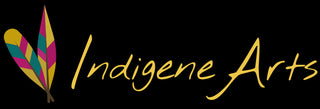
The World in Faces - Portraits of Indigenous People
The world is a beautifully diverse place with hundreds of unique Indigenous and ethnic minority groups, many of which are currently living on the edge, losing identity, language, traditions and, in some cases, facing total extinction.
The World in Faces photo project by Alexander Khimushin celebrates diversity of the world through the portraits of its people from all ethnic groups.

"While on the road, I realized that people were the most interesting part of my travel experience; it is them that I have the most unforgettable memories about. I was especially fascinated by people living in remote, off-the-beaten-path places, where traditional lifestyle and ancient culture remained untouched by the outside world." - says Khimushin

9 years and 84 countries later, Khimushin now has thousands of extraordinary photographs of Indigenous men, women and children from around the world.
He explains on his website why this project is important to him.
"The idea behind The World in Faces project is a result of my internal transformation, a shift from travel consumerism to giving back to the community, to make the world a better place. By praising the world’s ethnic diversity I hope to make us all more respectful and tolerant to people of different ethnicity, religion or culture.
By photographing people of different nationalities in traditional clothing I hope to raise interest for keeping our ethnic identities in the rapidly changing world of globalization. By taking portraits of disappearing ethnic minorities I would like to bring the world’s attention to their hardship that will hopefully help them to survive. It is equally important to gather and document what is still there: I often take portraits of elderly people that are the last native speakers of their indigenous language or the last ones who makes and wear traditional clothing.
Many of the ethnic minorities might not be around in a decade or two.
I see this project as an important mission of mine that can and will make a social impact."

Khimushin believes that embracing cultural diversity will make the world a more tolerant and compassionate place. "Our diversity is not a reason to hate each other. Quite the opposite, we must admire and respect it. If we all realize how unique and amazing we, the people, are, we will care more about each other, be more tolerant to people of another ethnicity, religion and culture."
Below are just a few examples of Khimushin's photographs of Indigenous people from around the world. Check his Facebook page for more photos and amazing stories that accompany them.
Oroqen Girl (Mongolia)

"Oroqen people (Orochon, Orochen) are an ethnic minority that is related to the Evenki people of Russia. They can understand each other's language about 70%. Until the early 1950s, Oroqen people were nomadic, leaving in conical dwellings made from the skins of the animals and the bark of trees.
They were mainly hunters until 1990s, until the government banned hunting in the area. Traditionally animal fur and skins are used for their clothing. They are shamanist by religion, however the last Orochon shaman died in October 2000.
Oroqen means a reindeer man in their language as their lifestyle was heavily dependent on reindeer herding. There are almost no reindeer left today. Oroqen people try hard to keep their culture alive, but it is not easy, because they can not maintain their traditional way of living anymore."
Meitei Elder (India)

Remote North-Eastern States of India are incredible places to experience the unique diversity of people living there. In many areas you'd think that you were not in India at all. Numerous minority groups living there belong to the Tibeto-Burmese language group.
They also have a very interesting and unique blend of Indian and Oriental cultures. This is a photo of a Meitei elder I took while attending one of the religious ceremonies. I was travelling across Tripura, Manipur, Mizoram and Nagaland in 2012, when restrictions for foreigners to visit the area (that had been closed for ages due to political unrest and border disputes) were temporarily lifted.
Evenki Indigenous People (Russia)

The Reindeer and its people. This portrait of Evenki Indigenous People, a father and a son that I took in my homeland - Sakha (Yakutia) Republic, the coldest inhabited area of the world. They belong to an extended nomadic family. All winter long, with temperatures as low as -50C/-58F, they live in simple tents many miles away from any other settlement, looking after a herd of their reindeer.
Evenki People are one of the last ethnic groups of the world that keep practicing their traditional reindeer herding, upon which their lives depend.
Young Indigenous Woman (Papua New Guinea)

Young Indigenous woman from Chimbu Province of Papua New Guinea
Chimbu is located in the central highlands cordillera of Papua New Guinea. One slope of the highest mountain of Papua New Guinea - Mt Wilhelm that is 4,509m/14,793ft high is located here. Chimbu has very steep and rugged mountainous terrain and people have to walk many miles each way to get to the regional centre because there are no roads to their villages. Locals mainly grow organic coffee.
Indigenous People of many different ethnic groups of Chimbu speak 18 different languages, further divided into different dialects. One language that is more or less commonly understood is Kuman, spoken by about one third of people of the province.
Some of the ethnic groups believe that the spirit of a human after death is reincarnated within the body of another living person of the same sex and similar age as the deceased.
Author: Marina Korneeva
